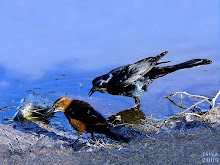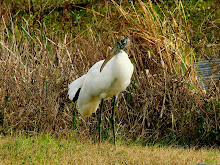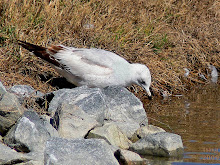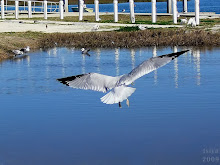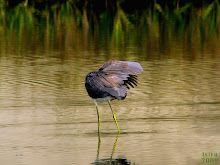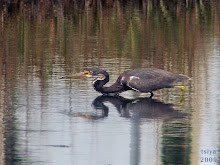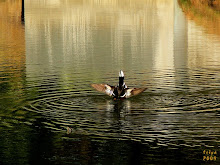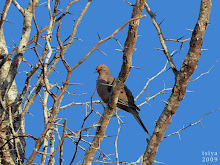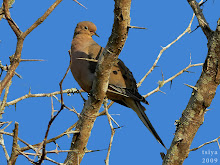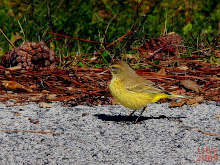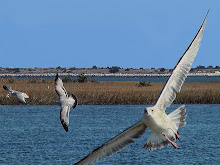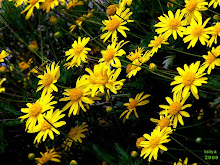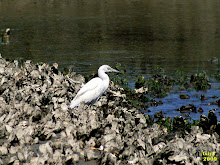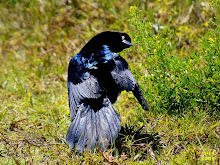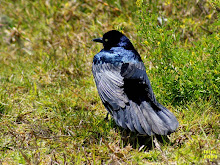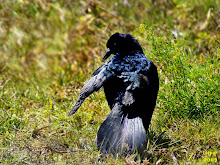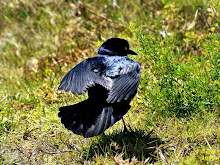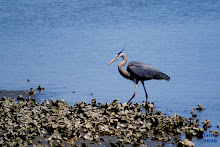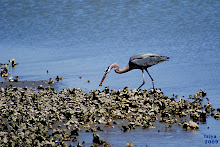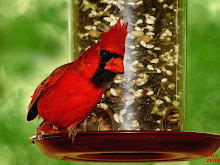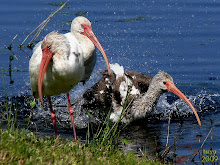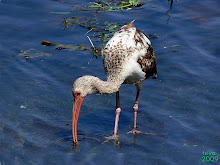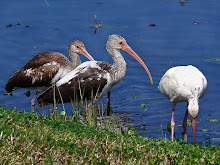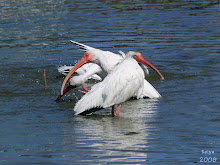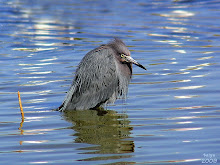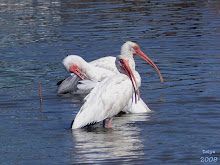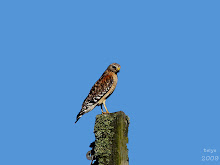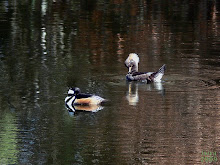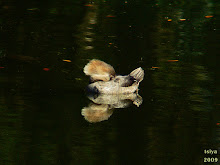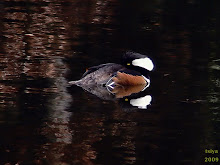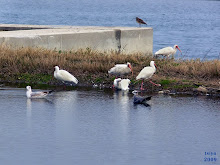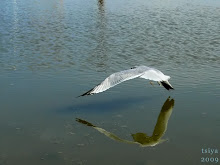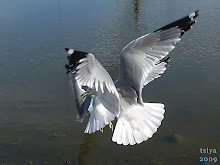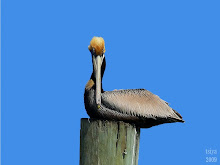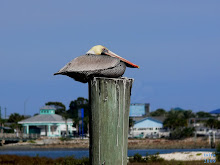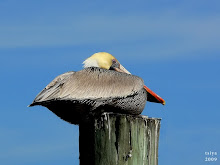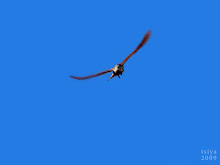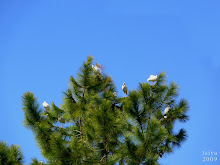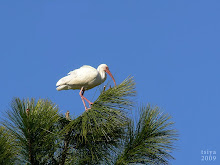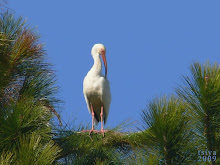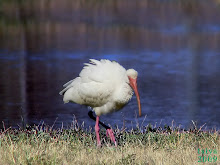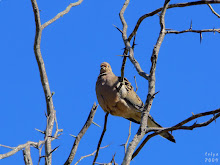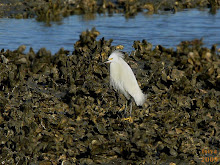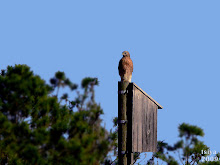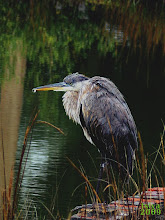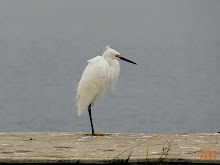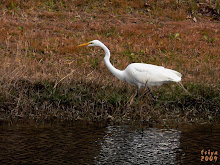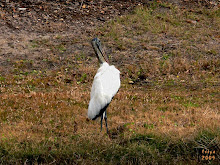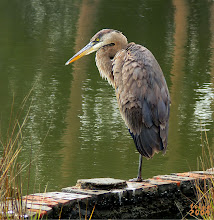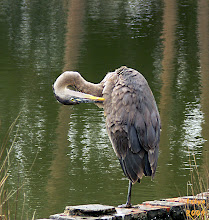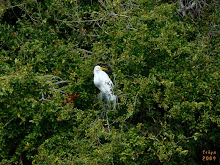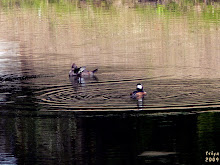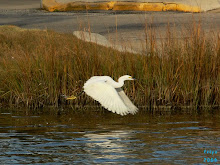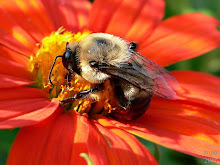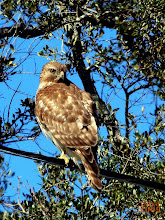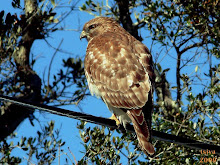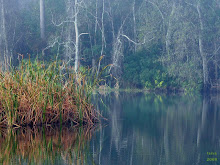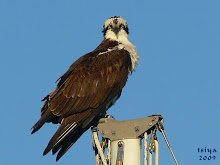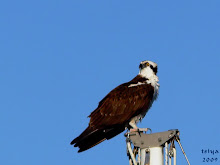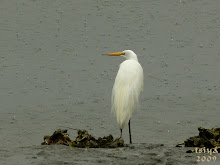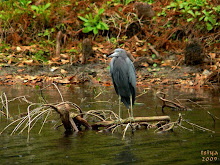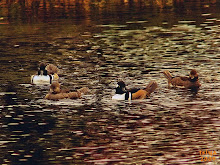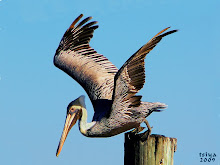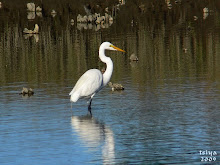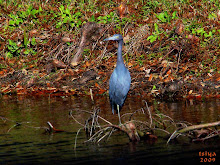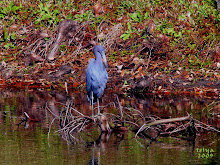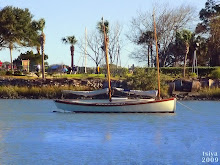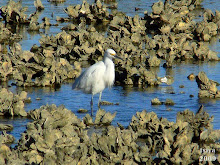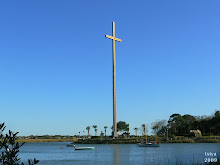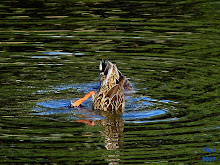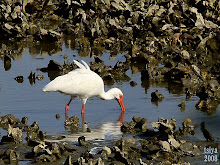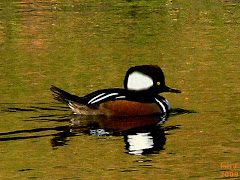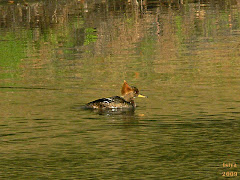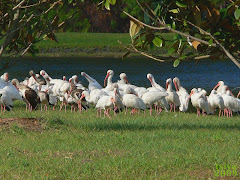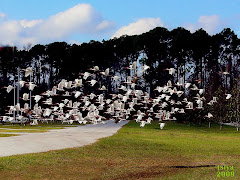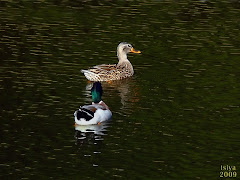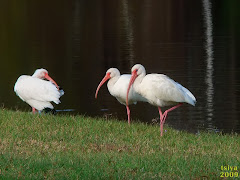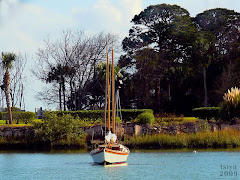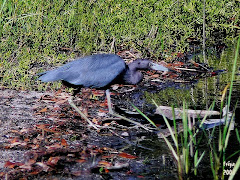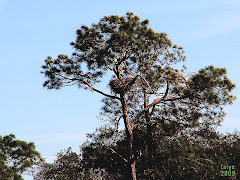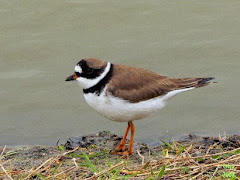Water, water, everywhere! This part of Florida has had a little over a foot of rain this month. I've sort of hibernated through it, can't drag the cameras around in a downpour.
The roadside ditches are brimming, millions of little frogs, snakes and crawfish are on the move, and the wading birds know it. Some stretches of our country roads are lined with hunting egrets, herons, storks and ibis.
I thought I had a good series of shots, then discovered that while messing around with the camera I'd set the ISO to 3200. The only shots worth keeping were a few I took on the cameras auto setting. I'll go ditch cruising again this weekend, the birds should still be there.
Saturday, May 23, 2009
Saturday, May 9, 2009
SPRINGTIME IN THE SWAMP
I made another visit to the St. Augustine Alligator Farm, got a late start, and the Sun was too high for best exposure. The Wood Stork and Great Egret chicks are big, and loud, constantly demanding to be fed. I still haven't seen all I want to see this year, it will take another visit.
Wednesday, May 6, 2009
Tuesday, May 5, 2009
Water Dancers, My World
Not much sunshine here for taking pictures, as soon as things brighten up I'll go back to the rookery. Many of the smaller herons are nesting now. Here are some of my favorite birds again, with some of my favorite music.
Friday, May 1, 2009
Meant Well, But With Bad Results
Someone said that the road to Hell is paved with good intentions.
The Mottled Duck, Anas fulvigula, is a cousin of the Mallards, but it is adapted to breeding and living in the Southern saltmarshes and does not migrate. It is hard to say just how many remain, and how many of those are 100% Mottled Duck.
Many tame Mallards have been released, and many people have fed migrating Mallards, resulting in a non migrating population of Mallards. Normally, there would be no Mallards here in breeding season, but now the Mottled Duck is slowly being absorbed.
Who knows if the resulting hybrids will be able to succeed in a saltmarsh environment, only time will tell.
Around the pond at the county health center here you will see some strange looking ducks. They are a blend of Mallard, Peking, and Muscovy. they survive well, as long as someone feeds them, but, I doubt they'd last very long at all in a saltmarsh, fending for themselves.
The Mottled Duck, Anas fulvigula, is a cousin of the Mallards, but it is adapted to breeding and living in the Southern saltmarshes and does not migrate. It is hard to say just how many remain, and how many of those are 100% Mottled Duck.
Many tame Mallards have been released, and many people have fed migrating Mallards, resulting in a non migrating population of Mallards. Normally, there would be no Mallards here in breeding season, but now the Mottled Duck is slowly being absorbed.
Who knows if the resulting hybrids will be able to succeed in a saltmarsh environment, only time will tell.
Around the pond at the county health center here you will see some strange looking ducks. They are a blend of Mallard, Peking, and Muscovy. they survive well, as long as someone feeds them, but, I doubt they'd last very long at all in a saltmarsh, fending for themselves.
Subscribe to:
Comments (Atom)
 |
| ||||||||||||||||||||||||
FEEDJIT Live Traffic Map
CURRENT MOON






